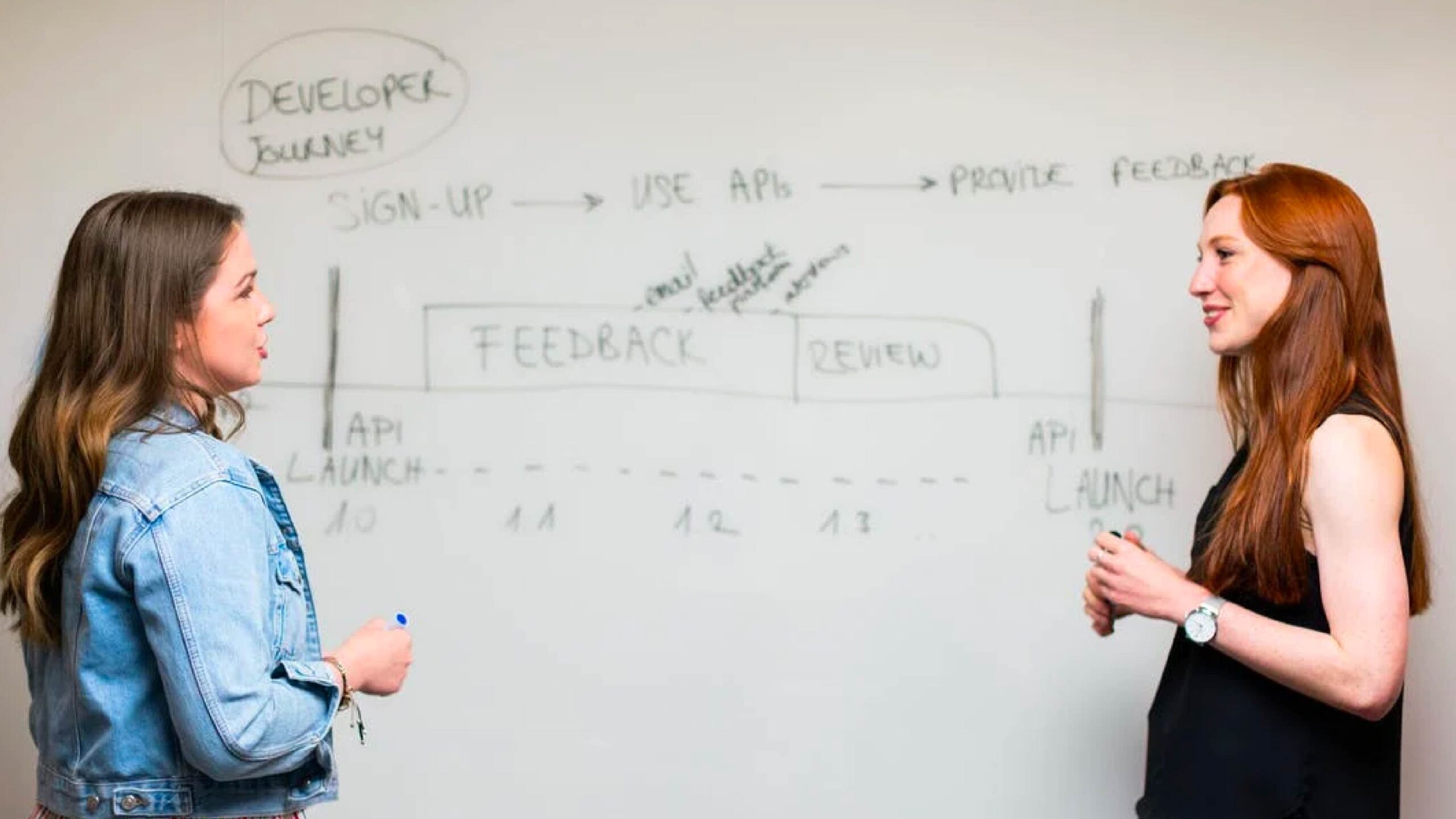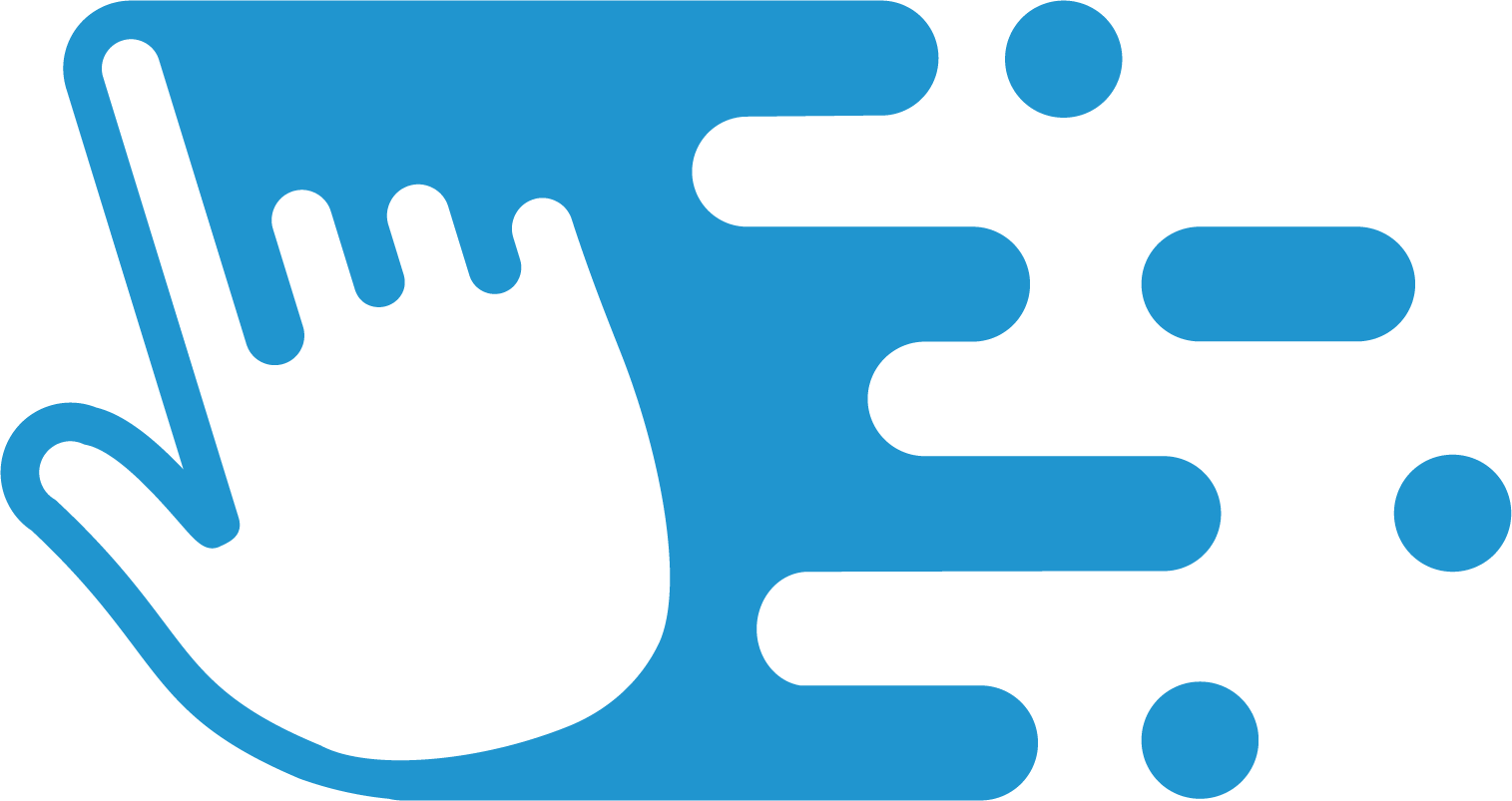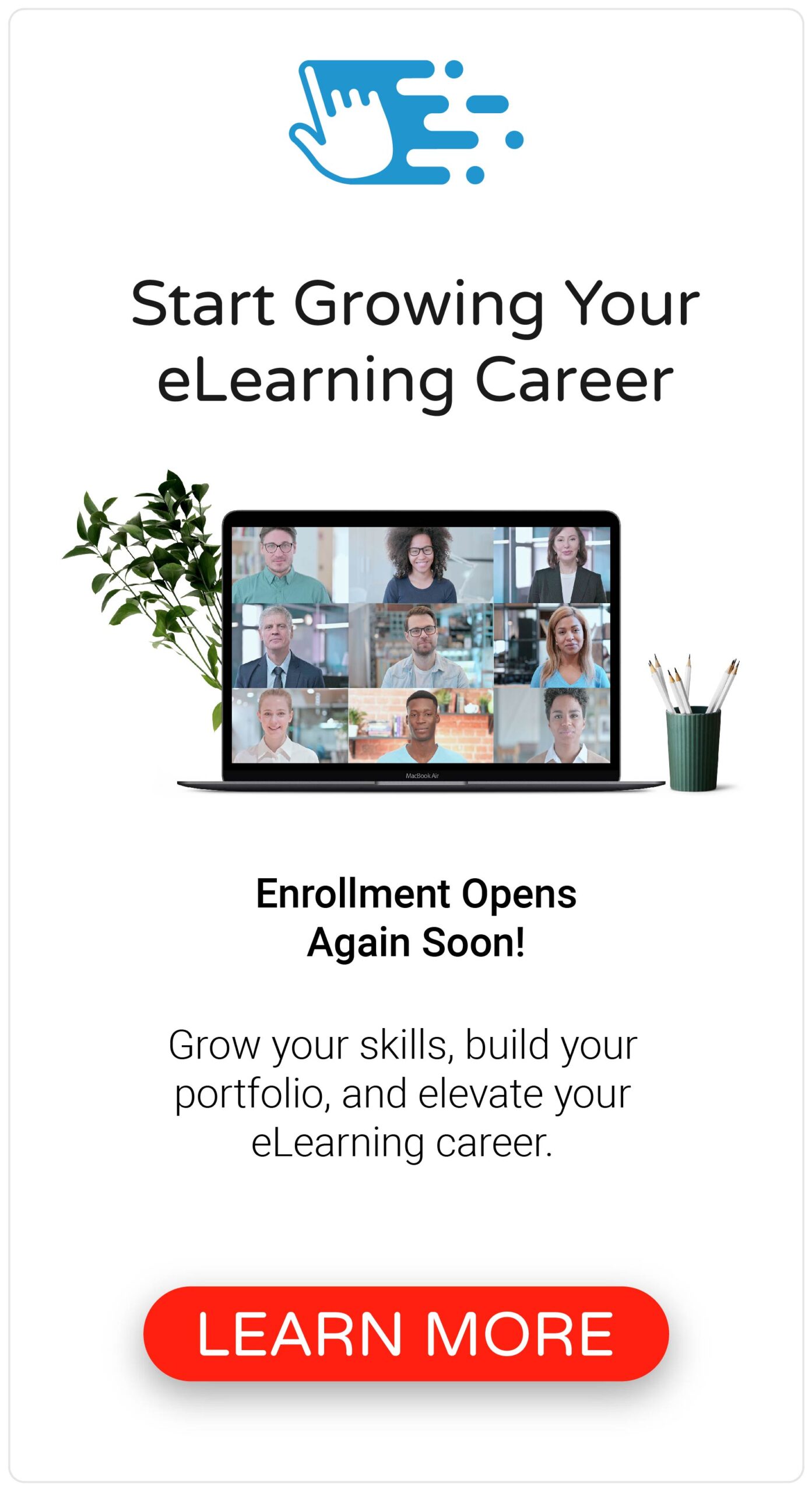When I first fell into the world of eLearning and instructional design, I had no clue what I was doing. I remember my very first project was to design and develop a series of five eLearning courses on how to catch shoplifters. And I’ll be 100% honest with you, I had no clue where to begin!
The truth is, I didn’t know how to do anything when it came to the eLearning design and development process. I had never written learning objectives before, I had never written a storyboard before, and I had never worked with a stakeholder or subject matter expert before, let alone understood the difference between the two! I was in over my head and quickly realized I needed to fake it.

Luckily, while my first project wasn’t the most beautiful or instructional sound, I managed to get it done. At the time, the only eLearning authoring tool available to me was Articulate Studio, a PowerPoint-based plugin that lets you convert PowerPoint slides into eLearning. The project took several months to complete, which included hiring a bunch of actors and working with our internal video production team to film various scenes of common shoplifter scenarios. And as I look back on it, I can confidently say I was thrown into the deep end of the pool—it was trial by fire, to say the least!

But I learned a lot about that experience. First, I learned that I was more capable than I initially thought. And second, I learned that in order to design and develop an eLearning course (or five of them), I needed to create and follow a standardized process for myself.
Well, that’s precisely what I did, and it’s more or less the same process I’ve been following for the last 15 years and what I cover in my book, The eLearning Designer’s Handbook, and what I teach in my multi-week cohort program.
So, whether you’re new to eLearning or you’re looking to become an eLearning designer, in this post, I’ll share my five steps to help you get started with the eLearning design and development process.
Step One: Plan the Project

My first step in the eLearning design and development process is to plan the project. It’s always been my belief that the success of any project, but especially an eLearning project, the planning you do on the front end will dictate the project’s success on the back end.
Too often, if we just accept the training requests that our stakeholders and subject matter experts send our way, without asking the right questions or making the right plans, you’ll quickly find yourself working on a project that is wildly out of scope and doesn’t actually achieve the desired goals. And while some may suggest models like ADDIE or SAM may solve this for you, there’s nothing about either model that inherently helps you execute your projects more effectively.
So, when you’re asked to create any training, eLearning or otherwise, the first task is to conduct a kickoff meeting. This is where you meet with your stakeholders and SMEs to understand their needs, ask questions, align on expectations, and determine the next steps. More often than not, at this point, you’ll also want to conduct some sort of needs analysis to validate the performance issue they are seeing and determine whether training is the proper solution.
From here, you may also want to conduct a task analysis, which can help you understand the specific procedures or tasks you need to teach through the training. It can also be helpful to create an Action Map to help you align your training solutions with a measurable business goal and remove nice-to-know information.
After this is all said and done, you’re finally ready to propose your training solutions (if that’s what your needs analysis indicated) back to your stakeholders and subject matter experts. Typically, I suggest doing this by creating a design document, which outlines the training solution at a high level, including the topics covered, target audience, learning objectives, training objects, and measurements. And the benefit of creating a design document is that it can help you have a conversation about the project’s scope, along with how you might create a blended training solution.
Finally, as part of planning the project, you also want to create a project plan and development timeline. Both of these documents are critical in helping you align expectations with your stakeholders and SMEs, as well as helping them understand the level of involvement you need from them during the project. These documents are also helpful to fall back on when you start to experience and manage scope creep.
Step Two: Draft a Storyboard

After you’ve planned your project, the second step in the eLearning design and development process is to draft a storyboard. Up until this point, planning the project wasn’t specific to eLearning, but as an instructional designer, it’s important to be open to all modalities when designing a proper training solution.
Assuming you’re creating an eLearning course as part of your project, you’ll want to start by drafting some sort of storyboard. I always like to think of a storyboard as being similar to a blueprint for a house—it lays out exactly how the house will be laid out before construction starts. The same is true for a storyboard—it outlines the content and details, word-for-word, of each slide or screen before you begin development.
However, if you’ve never written an eLearning storyboard before, figuring out where to start can be overwhelming. Personally, I suggest starting by organizing your course content by creating an outline. Whether you do this with sticky notes and a whiteboard or an online tool like Miro, creating an outline can help you figure out how you want each of the topics in your course to flow.
From here, you’ll then want to determine the type of storyboard you want to draft. While there’s no single format for what a storyboard should look like, typically, they fall into two categories: written storyboards and visual storyboards.
Written storyboards are ideal when you need your stakeholders and SMEs to just focus on the content of your course without getting distracted by the visuals or layouts of your slides. And visual storyboards are great when you’re creating a text-based course and want to offer a visual mockup of how each slide may be laid out.
After you’ve written the first draft of your storyboard, you then want to send it off to your stakeholders and subject matter experts for one or more review cycles. This is a critical step, as you don’t want to proceed too far into development (the next step) without ensuring everyone is on the same page about what you’re going to build before you build it.
Step Three: Develop the Course

So, at this point, you’ve planned your project and written a storyboard. This leads us to the third step in the eLearning design and development process, which is to develop the course. Development is where you actually start to build the course you’ve outlined in your storyboard. But, before you begin, the first decision you need to make is what eLearning authoring tool you will use to develop your course.
The truth is, in an ideal situation, you’ll already know what eLearning authoring tool you’re using before you begin storyboarding, as you’ll need to consider what each tool can and cannot do. For example, when comparing Articulate Storyline vs. Rise, Storyline is great for fully custom and highly interactive eLearning courses, whereas Rise is good for text-based and mobile-friendly courses.
Whatever tool you decide to use, the first developed draft of your course should be a prototype. While there are many different types of prototypes, most are simply a sample of your fully developed course, which lets you confirm with your stakeholders and subject matter experts what the final course experience will look and feel like. Typically, I recommend selecting three to five slides from your storyboard to develop as your prototype. This may include the title slide, a static content slide, and one or more interactive slides. The goal is to provide a sampling of the overall experience.
And just as before, when you drafted your storyboard, you also want to provide multiple review cycles of your course with your stakeholders and subject matter experts as you develop it.
Step Four: Make it Interactive

As you’re working to develop your eLearning course, the fourth step you want to follow in the eLearning design and development process is to make it interactive. When designed properly, interactivity is what lets you create a course where your learners can put their skills into practice. However, it’s important to remember that not all interactivity is created equally or can result in equal outcomes.
For example, click-to-reveal interactions are any interaction where the learner clicks and button and content is revealed, whether it’s some text, a video, or anything else. And while these types of interactions can be used to help you reduce on-screen text or organize content in a meaningful way, they don’t challenge your learners to put their critical thinking skills into practice.
On the other hand, performance-based interactions are any interaction where the learner has to make a decision and is presented with feedback and an outcome from the decision. These types of interactions can be as simple as a series of multiple-choice questions or as complicated as a series of branching scenarios.
Step Five: Implement the Course

After you’ve developed your course, incorporated interactivity, and reviewed it with your stakeholders and subject matter experts, the fifth and final step of the eLearning design and development process is to implement the course.
As I mentioned in step one, all the work you put into planning your project on the front end will determine its success on the back end. There’s a lot that goes into implementing any type of training solution, whether or not it includes eLearning. In general, you need to consider how you’ll make your course available to your learners. Will it be published in your learning management system (LMS) or elsewhere? How will the course be communicated to your learners, and who will track and ensure that it’s taken.
After you’ve launched your course and delivered it to your learners, you also want to take time to evaluate and measure the effectiveness of your course. This is where Kirkpatrick’s Four Levels of Evaluation are used to measure learner reaction, learner knowledge, learner behavior, and business results.
And finally, I also recommend conducting some sort of project retrospective. Whether you do this by yourself or with everyone else who participated in the project, conducting a retrospective is an opportunity to evaluate how the project was executed by analyzing what went well, what didn’t go well, and what you need to do differently next time to improve.
The Bottom Line
There’s a lot that goes into the eLearning design and development process. From planning to storyboarding and from development to implementation, having a well-structured and repeatable process can help you get started. And while we only explored some of the tasks you need to focus on when designing and developing eLearning, hopefully, these five steps will make your next (or first) eLearning project a little less overwhelming.
What other tips do you have about the eLearning design and development process? Share them by commenting below!







